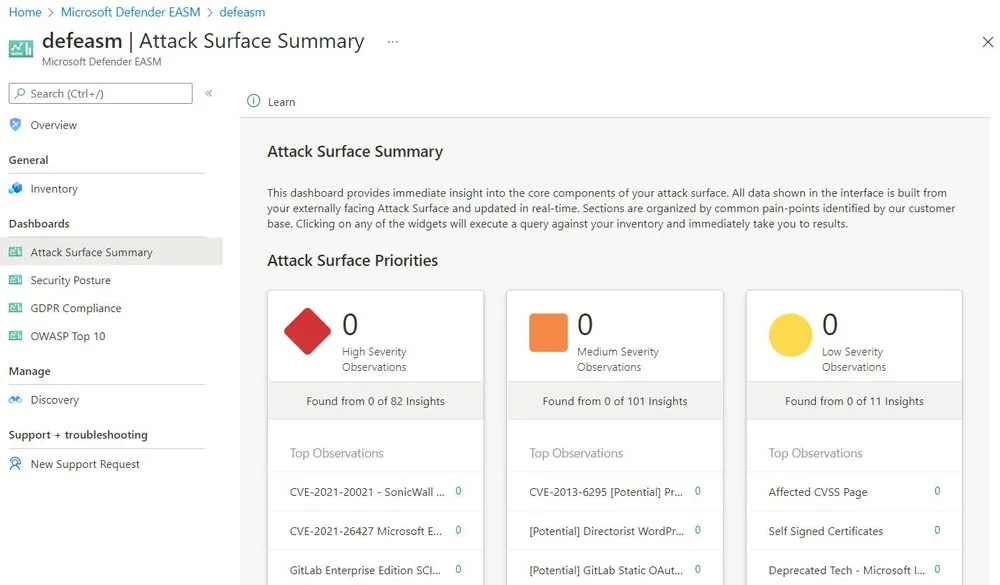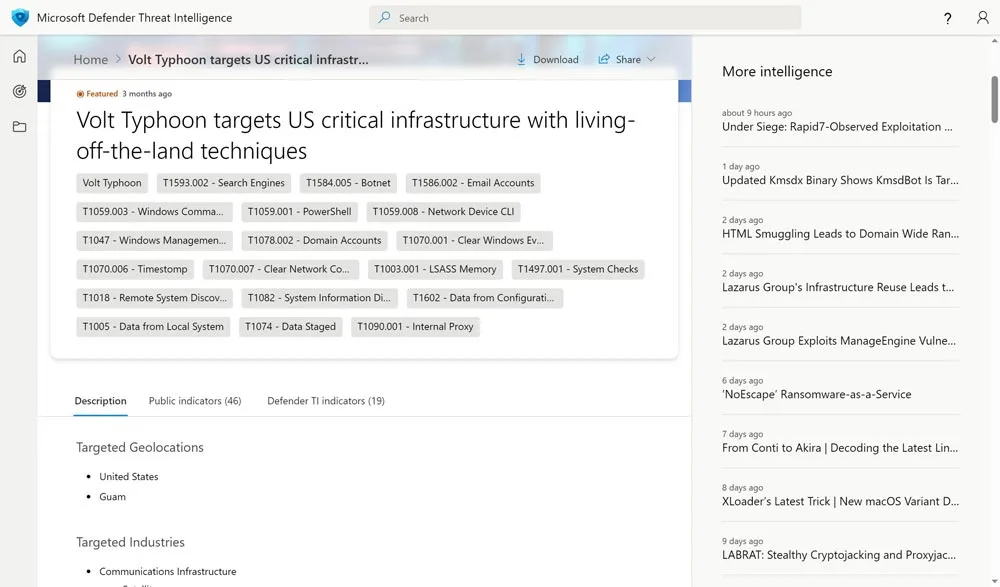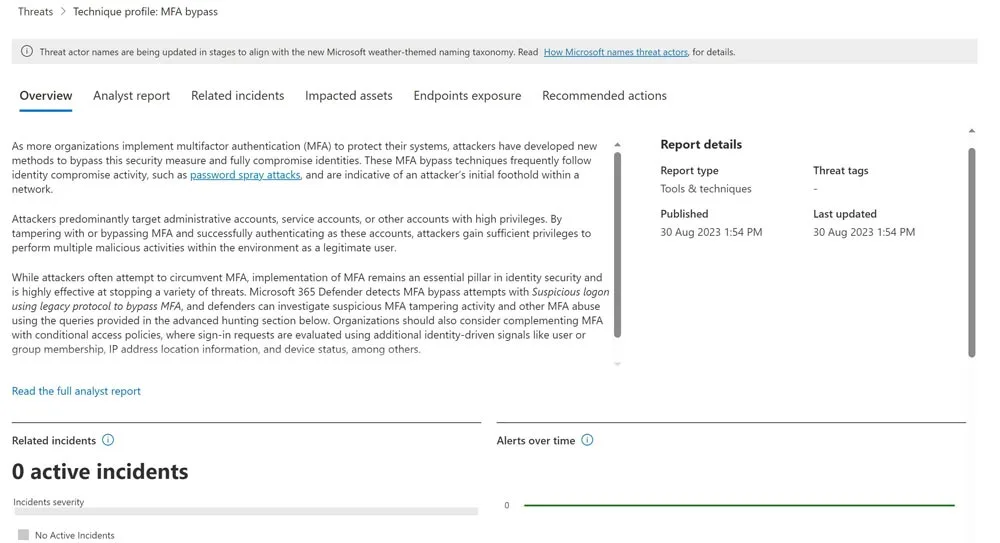

Boosting Safety Through Cyber Threat Intelligence to Secure Your Digital Space
In an age where the digital landscape is continually evolving, businesses and individuals alike face increasing threats from a myriad of cyber adversaries. To navigate these challenges, there has been a growing emphasis on the value of threat intelligence in the cybersecurity domain.
But what exactly is threat intelligence, and why has it become a cornerstone of contemporary cyber defense strategies? In this article we’ll look at threat intelligence (TI), the different flavors of threat intelligence, how it can be operationalized in a business, and the different stakeholders that can benefit from it.
Understanding Cyber Threat Intelligence
At its core, cyber threat intelligence (CTI) is a comprehensive understanding of potential threats that could target an organization or individual. This knowledge isn’t merely about being aware of possible cyber threats, but it encapsulates the wider context in which these threats operate. It dives into the motivations, Tactics, Techniques, and Procedures (TTPs) used by threat actors.
CTI is derived from an analysis of both raw and processed data. The data’s source can range from open sources (like news articles or blogs) to dark web forums and technical data from internal and external threat feeds. The ultimate aim is to convert this vast amount of data into actionable intelligence that can guide both strategic and tactical decisions.
Obviously, the concept and application of threat intelligence will differ greatly between smaller and larger organizations.
For very small SMBs, threat intelligence may simply be having awareness that there are threat actors that pose a cyber threat to them and maybe (if they can afford it), outsourcing their cyber security team to a provider, such as a Managed Security Service Provider (MSSP), or a Managed Service Provider (MSP). This organization will then enlist threat intelligence as described in this article to keep their clients safe.
Larger organizations with their own security team and cybersecurity professionals will have a different approach to threat intelligence.
Some teams will merely consume cyber threat intelligence prepared by external vendors in a threat intelligence platform, in even larger organizations there might be a whole team of security analysts investigating the cyber threat landscape, emerging threats, and preparing actionable cyber threat intelligence for the larger security operations teams.
The Rise and Importance of Threat Intelligence
One might wonder why threat intelligence is suddenly in the limelight. The importance of threat intelligence lies in its proactive nature. Instead of waiting for an attack to happen, organizations can use threat intelligence to anticipate potential threats and fortify their defenses accordingly.
It’s akin to having a forward scout in a battle, providing information about enemy movement, enabling an organization to anticipate and strategize instead of merely reacting.
By understanding the motivations and Tactics, Techniques and Procedures (TTPs) of adversaries, businesses can build more robust security measures that specifically target these potential weak points. This contextual information makes all the difference; it’s the transformation of a generic defense strategy into one tailored to the specific threats an organization might face.
The Threat Intelligence Lifecycle
Where the organization is large enough to have cybersecurity professionals focused on gathering threat intelligence data and produce finished threat intelligence, the process generally goes through the following phases:
- First the requirements are gathered from various stakeholders involved in the business.
- Raw threat data is collected from internal logging systems such as Security Information and Event Management (SIEM), Endpoint Detection and Response (EDR), eXtended Detection and Response (XDR) and even Attack Surface Management tools. This is augmented by external threat data feeds and other publicly available data sources, information sharing communities and X (Twitter).
- The collected data is processed to narrow down the relevant information.
- In the analysis phase the filtered data is aligned with the requirements from phase one to produce actionable threat intelligence.
- This is then disseminated to the stakeholders in the business, such as security personnel, and senior leadership, and also perhaps shared in a threat intelligence platform.
- Once this threat intelligence lifecycle is complete, feedback is gathered so that the process flows smoother next time around.

The Beneficiaries of Threat Intelligence
The benefits of threat intelligence aren’t exclusive to large corporations with vast cybersecurity infrastructures. Multiple entities, ranging from individual users to governments and multinational corporations, can reap its rewards.
For instance, IT teams can leverage threat intelligence to prioritize patch management by understanding which vulnerabilities are being actively exploited in the wild. On the other hand, executive leadership can use threat intelligence insights to steer the broader organizational cybersecurity strategy.
Furthermore, even smaller businesses, which often believe they are not prime targets for cyber-attacks, can benefit immensely from threat intelligence. With the understanding that many cyber adversaries use automated attacks, small to mid-sized businesses realize they too can be collateral damage or a steppingstone in a larger attack chain.
Delving Deeper: Types of Threat Intelligence
While threat intelligence as a concept might seem straightforward, it can be further broken down into several types:
Tactical threat intelligence
This pertains to information regarding specific tactics, techniques, and procedures used by cyber adversaries and generally focuses on the immediate future. It can be in the form of indicators of compromise (IoCs), which include IP addresses, URLs or specific malware hashes.
Strategic threat intelligence
This type gives a holistic view of threats, focusing on long-term trends and emerging risks. It’s essential for high-level executives and decision-makers who need to understand the bigger picture.
Operational threat intelligence
More hands-on, this type provides insights about specific operations, campaigns, or attack patterns, allowing defenders to discern potential motives and targets. It answers questions such as who / why and how regarding the threat groups.
Technical threat intelligence
Sometimes a fourth type is included, Technical Threat Intelligence. This is more focused on the mechanics of the early phase of an attack, often involving spear phishing, baiting and social engineering.

The Importance of Threat Intelligence
As cyber threats evolve, the reactive approach of patching vulnerabilities and recovering from breaches is proving insufficient. Threat intelligence offers a proactive stance. It’s about understanding the threat landscape, anticipating potential risks, and taking appropriate preventive measures.
One very important point to realize is that threat intelligence on its own is of limited value. To achieve the best value out of any of the three or four types of CTI it must provide actionable advice. Ideal characteristics are organization specific, detailed, and contextual to the business and being actionable.
Threat Intelligence Benefits
Anticipatory defense
By understanding the tactics and techniques of adversaries, organizations can anticipate and prevent potential threats rather than reacting post-breach.
Enhanced decision making
Knowledge is power. With accurate and timely threat intelligence, decision-makers are empowered to make informed choices regarding resource allocation, strategic planning, and risk management.
Strengthened security posture
Informed by threat intelligence, security teams can fine-tune their defense mechanisms, adopt suitable technologies, and devise appropriate security strategies.

Sources and Collection of Threat Intelligence
Effective threat intelligence is as much about quality as it is about quantity. The sources of both tactical intelligence and strategic intelligence are varied:
Open-source intelligence (OSINT)
Information derived from publicly available sources. This could be information shared on security forums, news articles, or other public domains. A good place to start are vendor reports such as Hornetsecurity’s Cyber Security Report and surveys, such as this one for Ransomware.
Commercial threat intelligence
Offered by specialized providers, this kind of intelligence typically comes at a cost but offers in-depth insights, often tailored to specific industries or threat landscapes.
Internal threat intelligence
Derived from an organization’s internal security logs, traffic data, and previous incidents. This type of intelligence is unique to the organization and provides insights into specific vulnerabilities and past breaches.
Government and industry-specific sources
Governments and industry bodies often share threat intelligence pertinent to their specific sectors, ensuring organizations within their domain remain secure. Depending on the size of your organization, having a good relationship with the Information Sharing and Analysis Centre (ISAC) for your industry vertical or country is important.
The Application of Threat Intelligence
As mentioned, while having threat intelligence is one half of the puzzle, its effective application is the other half. Here’s how threat intelligence is used:
Security operations
Enhancing the efficiency of security operations centers (SOCs) by providing them with the latest information on threats.
Risk management
Assisting in the identification, assessment, and prioritization of risks.
Incident response
Informing teams about the latest threats, ensuring faster and more effective response strategies.
Awareness and training
Educating stakeholders and staff about the latest threats, ensuring everyone is informed and vigilant. Don’t forget your end users, they need regular security awareness training to ensure they catch attacks that slip through your technical controls.
To properly protect your cyber environment, use Hornetsecurity Security Awareness Service, and Advanced Threat Protection to secure your critical data.
We work hard perpetually to give our customers confidence in their Spam & Malware Protection, Email Encryption, and Email Archiving strategies.
To keep up to date with the latest articles and practices, pay a visit to our Hornetsecurity blog now.
Conclusion
The realm of cybersecurity is no longer just about having the most substantial walls or the most robust firewalls. It’s about understanding the enemy – their motivations, their methods, and their tools. That’s where threat intelligence shines.
With an effective threat intelligence strategy, organizations are not only more informed but are also better equipped to thwart potential cyber threats.
Given the relentless evolution of the cyber threat landscape, the importance of threat intelligence cannot be overstated. It serves as a beacon, guiding entities through the intricate maze of cyber risks, ensuring that they remain one step ahead of potential adversaries.
In an increasingly digital world, staying informed and proactive with the help of threat intelligence will be the hallmark of a robust cybersecurity strategy.
FAQ
Cyber threat intelligence is the collected and analyzed information about potential cyber threats, including the methods, motivations, and tactics used by cyber adversaries. It offers actionable insights to organizations, allowing them to anticipate and mitigate potential cyber risks.
Threat intelligence is crucial because it enables organizations to adopt a proactive stance against potential cyber threats, rather than merely being reactive. By understanding the landscape of possible threats, organizations can tailor their cybersecurity strategies and defenses more effectively.
Everyone, from individual users to large corporations and governments, benefits from threat intelligence. It helps in identifying, understanding, and mitigating potential threats, thus safeguarding assets, data, and overall digital infrastructure.
